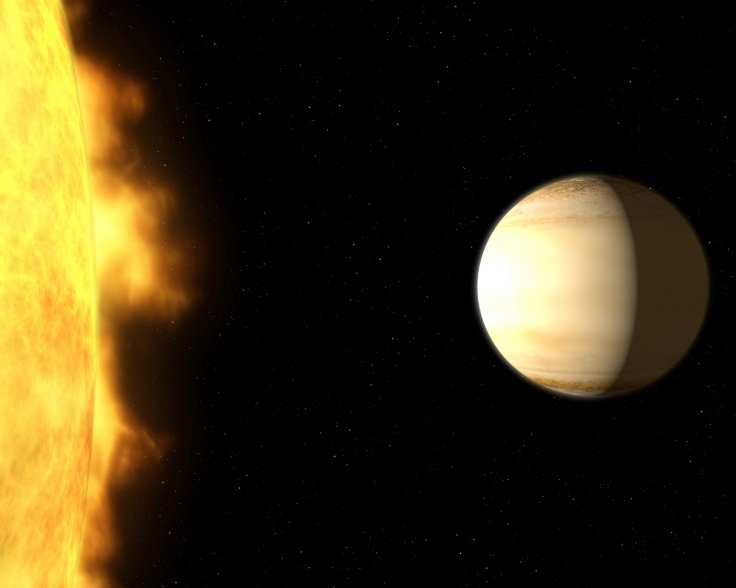
NASA's Hubble Space Telescope has found an exoplanet 700 light-years from Earth with three times as much water as Saturn, indicating that it is a hot immigrant body that can reveal the origin of the planets.
Called WASP-39b, the scorching hot exoplanet has hot vapor and inflated atmosphere suggesting that the planet was bombarded with metal-rich ice during its origin. Its atmospheric temperature is in the range of 1,400 degrees Fahrenheit. Positioned 20 times closer to its star than Earth is to the Sun, it is tidally locked, meaning it always shows the same face to its star the way our moon is to Earth.
Its dayside temperature keeps powerful winds transport heat from the dayside to nightside as well and keep it permanently hot. "WASP-39b formed beyond the snow line in the planet-forming disk of the host star," says NASA's lead scientist Hannah Wakeford. "Exoplanets are showing us that planet formation is more complicated and more confusing than we thought it was."
Though researchers were not surprised to find water, they were startled by how much they found, which suggests that the planet formed farther out from the star, where it was bombarded by huge amounts of icy material. This gives out that WASP-39b must have formed differently from the famously ringed Saturn in our solar system.
The most-detailed ever study of the exoplanet was made possible when Hubble findings were studied in combination with the findings from other telescopes. Much like detectives who study fingerprints to identify the culprit, they used NASA's Hubble and Spitzer space telescopes to find the "fingerprints" of water in the atmosphere of a hot and bloated exoplanet.
Located in the constellation Virgo, WASP-39b orbits a quiet, Sun-like star, called WASP-39. Its mass is similar to our own Saturn but it clearly lacks rings. It was located so close to its star that it just takes four days to complete a revolution. What makes the planet unique is that it is an alen planet that might have gate-crashed into the current solar system, said scientists who were upbeat about their new findings.
Wakeford is gearing up for the next NASA's James Webb Space Telescope, to be launched in 2019, - to get an even more complete spectrum of the exoplanet, including the planet's atmospheric carbon, which absorbs light at longer infrared wavelengths than Hubble can see. The amount of carbon and oxygen in the atmosphere provides clues for scientists to learn more about where and how this planet formed.









